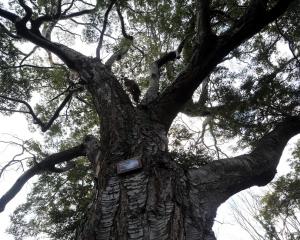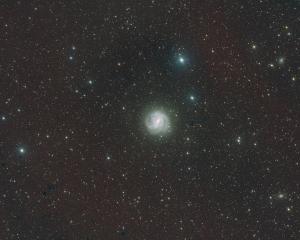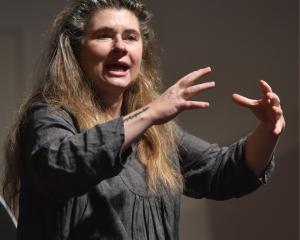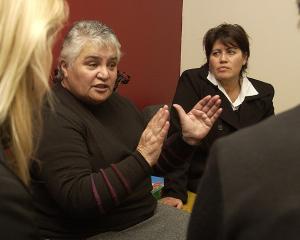A new exhibition at Dunedin Public Art Gallery will give people a view on New Zealand's contemporary art scene, assistant curator Lauren Gutsell tells Rebecca Fox.
A light switch that is not, a staircase to nowhere and a man lifting his mother.
What all of these have in common is they are contemporary artworks by New Zealand artists.
They are also in Jim and Mary Barr's private collection and have been selected for an exhibition at Dunedin Public Art Gallery.
Exhibition curator Lauren Gutsell said the couple had loaned 120 works to the gallery long-term and gifted 30 to the permanent collection.
This was the third exhibition of their work at DPAG - the last was in 2006 - and would feature the work of 17 artists, young and established.
"It's been a real privilege being able to delve into a private collection and bring my own perspective and ideas to something that Jim and Mary live with every day.''
It features work the couple have collected since 2008 and reflects the way the selection of the work is has been affected by where they live and how they live with it.
"It is a good snapshot of what is currently happening in New Zealand.''An example was the large replica of a staircase by Fiona Connor from the Barrs' warehouse-living days.
"At face value it seems monumental, tons of concrete, timber and steel. In reality it is polystyrene and paint.''
As the couple have downsized their living space they have done the same with the pieces they buy, although they say they are buying more.
Rebecca Fox asks Jim and Mary Barr about collecting.
Q How did your private collection come about?
A We started buying art in the early '70s and it took a while for us to consider it as a collection.
The art world wasn't as well-organised back then, with fewer dealer galleries and fewer artists.
There was no email of course and no jpgs either.
That meant we mostly bought work by artists we knew personally from university days.
In Wellington we were introduced to Peter McLeavey and the Bett-Duncan Gallery and started looking and buying in a more focused way.
Q What do you look for when acquiring art?
A We look for work that stops us to have another look, whether in the way it's made, or the materials, or an image or even a story.
You're going to live with these things for a long time so you don't want them to give up all their secrets in one day, or even one month.
The biggest change in what we have bought over the years has probably been the introduction of photography, video and sculpture.
As New Zealand art has become more diverse and there are many more artists, the opportunities for collectors have grown too.
And now artists are often more confident and keen to engage internationally as well as locally.
We really like that sense of ambition.
As you can see from the exhibition at Dunedin Public Art Gallery, we ended up with one very ambitious work commissioned from the young artist Fiona Connor.
It's the staircase from the building that we were living in at the time.
There's no way it would fit into any of the rooms of our current apartment so it's a marker of a particular time in our lives and we're excited to see it again with everything else.
Q What is the role of the private collector in the New Zealand art scene?
A Private collectors are a mixed bunch of course so the roles they play can be very different.
Some see themselves as investors, others as patrons, others as people who can orchestrate a classy interior.
We like being in a position to make our own judgements and jump in early and support younger artists.
For most of the time we've been buying, much of the art we were interested in was comparatively inexpensive.
Of course, when artists you support become successful in the market you have to look elsewhere, so there's a cycling through of generations.
We've also played the role of friends and advisers so we've often been able to offer the sort of support that only friends can give.
The other role we consider very important is to make sure that a good proportion of the art we have purchased is given to public art museums and that the artists share in any profits we make along the way.
Q What state is New Zealand's contemporary art scene in?
A We'd say it's surprisingly vibrant.
Every year, more young people come out of the art schools producing not only their own work but an attentive and informed audience.
There's been a huge investment in art institutions since the 1960s, in particular, so there's a lot of infrastructure and a lot of people who are pursuing professional careers in the visual arts.
As part of an international trend there is a growing appetite for contemporary art.
People travel more and have access to more (thank you internet) so they're more relaxed about exploring work that in the past they may have dismissed as weird.
And there are a lot of artists here, so what you can see ranges from the energy and new ideas of young artists to mature artists who have a lifetime of experience to draw on.
And then there's artist-run spaces, auction houses, dealers, privately funded initiatives like sculpture parks, festivals, events, and such enthusiasm that it's a great place to hang out.












